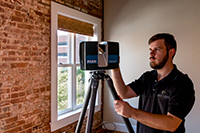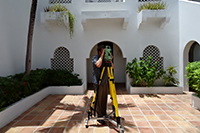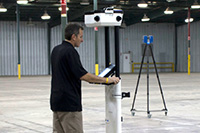A Look Toward 2023: 5 Considerations for AEC Firm Leaders and How to Lighten the Load
One in four AEC firms will not achieve hiring goals. Scope creep happens in 70% of projects, 72% get delayed, and 73% are over budget. A recent study from PMI reveals getting things done is a top issue for AEC firms. Tight margins, intense competition for talent, and demands for faster completion underscore the enormous pressure on AEC firms.
Companies need to scale to compete.
Firms do not have to be huge to compete, but they will need to be large enough to develop the expertise, customer experience, and technical infrastructure.
Rising costs are a concern for AEC organizations of all sizes. Budgets are under review by AEC experts, who are also searching for ways to cut costs and limit price rises for clients. Leaders must adjust processes, organizational structures, and skillsets to thrive in today’s technology-driven industry. AEC executives are looking at technology and collaborative solutions that help save time, money, and energy to achieve corporate goals.
Growth demands more than a few fresh ideas.
It calls for equipment, office space, additional production and development resources, and even more people to lead and manage these teams. Many AEC businesses fail to grow because they lack the finances and resources to take their ideas to a sustainable future.
The trick? Focus on priority work such as business development, opportunities for innovation, and a great culture. Engaging a third-party consultant can offer additional resources for document creation, as-built surveys, 3D modeling, BIM coordination, and other managed services. By leveraging external expertise, you solve many distraction problems caused by staff turnover, skill gaps, and recruiting issues.
Coast 2 Coast offers staff augmentation, managed services, and consulting resources.
2. Old Habits Die Hard
Could you imagine using mechanical pencils to produce a CAD drawing in your office today? On the Autodesk blog, Revit specialist Tomasz Fudala pointed out that CAD revolutionized AEC.
Another AEC industry revolution is happening.
The rising use of 3D modeling software has dramatically changed design strategies and associated processes.
Revit enables architects and engineers to create concepts, reports, drawings, and schedules from the 3D model from one tool. It’s quicker and easier than is possible from 2D plans, and while most firms have at least begun migrating to a 3D workflow, there are a couple of stumbling blocks. First, clients often expect the old CAD files and PDF plans to be good enough. Second, converting a point cloud created from laser scanning into a usable 3D model is no small task. That said, Revit features are not just handy in planning and design phases; they also help increase productivity, minimize errors, reduce risk, and optimize schedules during construction.
No need to settle.
Using client-provided point clouds or 2D drawings as the basis for a 3D Revit model is just a conversion service away.
PDF to Revit or CAD to Revit conversions are budget-conscious options in multiple scenarios. Using professional services offers control over the final output. It means you can be sure typical AE drafting conventions and your modeling style preferences get incorporated. You can choose to consolidate drawings or limit the scope to specific sheets. It’s affordable and fast, and files will be immediately editable in Revit without requiring additional work.
Send us client-provided point clouds and have them converted to Revit. We also convert client-provided CAD/PDF files to a 3D model.
3. Everything Old is New Again
Market and policy changes are driving more renovations and retrofits in existing buildings. The increase follows the COP26 conference and a series of new regulations in major cities throughout the US. There is a heightened focus on reaching net-zero emissions throughout the AEC industry.
Net-zero building is gaining attention.
Instead of new construction, repurposing the building offers a way to reduce the consumption of non-renewable materials. Other ways renovations align with green initiatives include the reduction of carbon emissions and energy efficiency improvements.
But there is a catch. Feasibility worries, building code concerns, and best-approach questions plague AEC professionals.
Understanding the physical attributes of an old building envelope is more important than ever.
Always have a plan.
Since the best answer is “it depends,” documentation of existing conditions is an ideal place to start. Hidden costs and unexpected issues will arise in most projects, and planning for them early on makes the process much smoother.
Reality capture tools can save hundreds and thousands of dollars and countless hours wasted on trips to the job site. Accurate data also means accuracy in the building model. Utilizing Revit delivers the ability to create building components within the old construction, analyze and simulate systems and structures, and iterate on design ideas. Construction documentation can then be generated directly from the software. Overall, these 3D tools deliver a better way to plan and manage the project.
Coast 2 Coast Reality Capture: We go where you need us on-site with numerous tools to help us capture buildings inside and out – interior layout, above-ceiling details, MEP systems, exterior facade, topographical/site plans, and aerial details.
4. Teamwork makes the dream work.
As practice leaders face the question of how to reuse buildings and assets, a shared vision (and shared data) provides the answer. In a more remote, work-from-home world, the where and how of teamwork becomes much more critical.
There is a convergence of collaboration and digital transformation.
Building Information Modeling (BIM) offers a workflow for multiple project contributors. Each team member and disciple can access centrally shared models. Architects take an idea from concept design to construction documentation. Engineers can analyze structural conformance to building and safety standards or conduct simulations to detect interference between MEP systems. GCs better understand how the means, methods, and materials come together to improve productivity.
As the complexity of projects increases, design teams must be more collaborative. For architects and engineers, interactive design practices will bridge the physical distance and unlock new opportunities. The question? How to pragmatically implement this type of framework.
Democratize the data.
A sub-trend of the digital movement certainly seems to be a shift to integrated solutions and realistic visualizations. Numerous systems, devices, and applications facilitate collaboration between multiple AEC teams and disciplines.
Revit software offers the ability to exchange and use information across multiple platforms. Software companies have created an extensive list of plug-ins to perform specialized tasks within industry-standard products like Autodesk. There are also many integrations with 3rd-party applications that aid in visualizations. For non-technical stakeholders and owners, digital twins offer incredible insights. A digital version of the building, alongside the actual performance data, can be used to demonstrate what projects should look like during operation.
Coast 2 Coast works as an extension of your team. From site-verification to substantiate that on-file plans are reliable to laser scanning and modeling tailored to your modeling style preferences, we help fill the communication gap.
5. Knocking it out of the park
Producing outstanding results and performing extraordinary well is a requirement to stay in business. Considering the statistical win rate for an Architectural RFP is about 5%, effectively communicating design intent to project owners and team members has never been so important.
Know that seeing is believing.
Two-Dimensional drawings are sometimes challenging to understand, while an immersive experience instantly conveys how the design meets the need and vision.
Modern CAD and BIM software like Revit provides more than just the resources to manage a construction project. There is less wasted time explaining context because the high-impact 3D images of models and digital twins help clients visualize your physical work. The virtual re-creation is also valuable for board approvals, sales and marketing, and facility planning teams.
Create realistic visualizations.
Using 3D modeling and rendering services can make a tremendous difference when designing for renovation projects. Revit also allows you to show the complete life cycle of a project: before and after or existing versus proposed status.
The process typically starts as a base model with accurate dimensions and details. Next is the addition of material textures and virtual lighting. The result is a view of what the final product will look like in real life. The 3D scene could include a single image or be a complex series of objects, animations, and intertwined landscapes. Renderings offer both versatility and flexibility to visualize how existing structures and topography will change or be re-imagined.
Coast2Coast stands out to clients because our deliverables are ready to use without requiring additional work.



